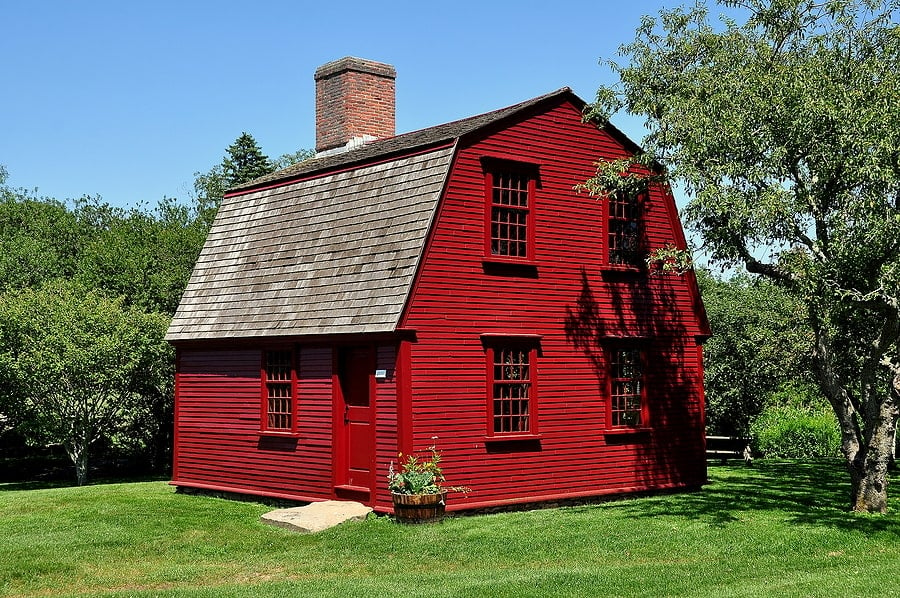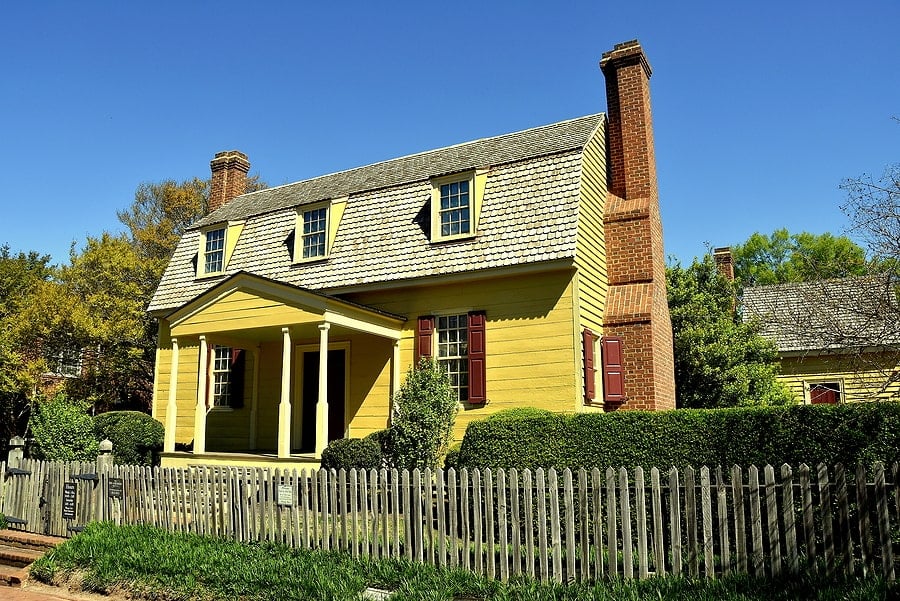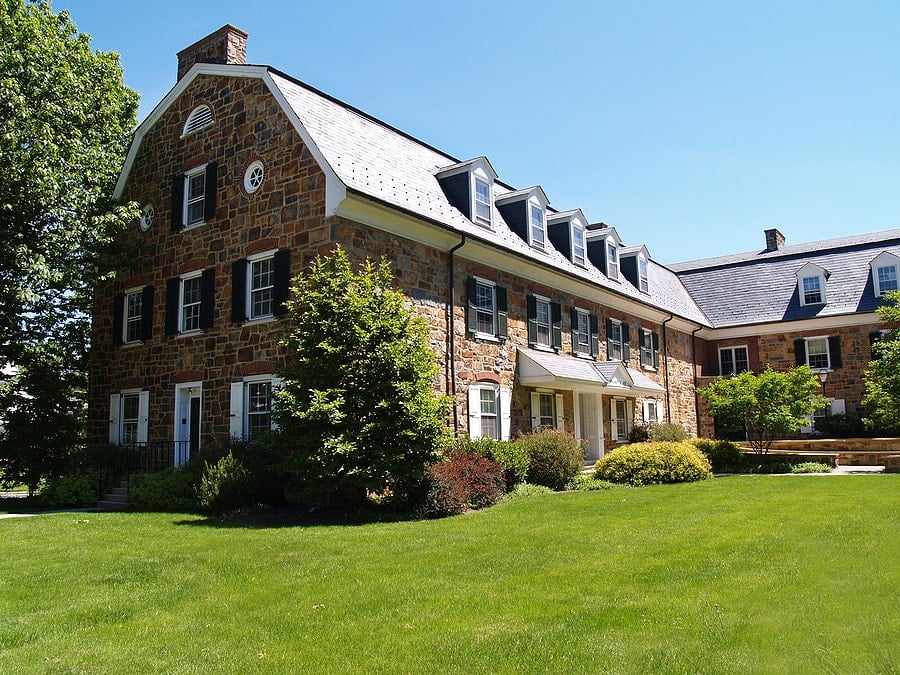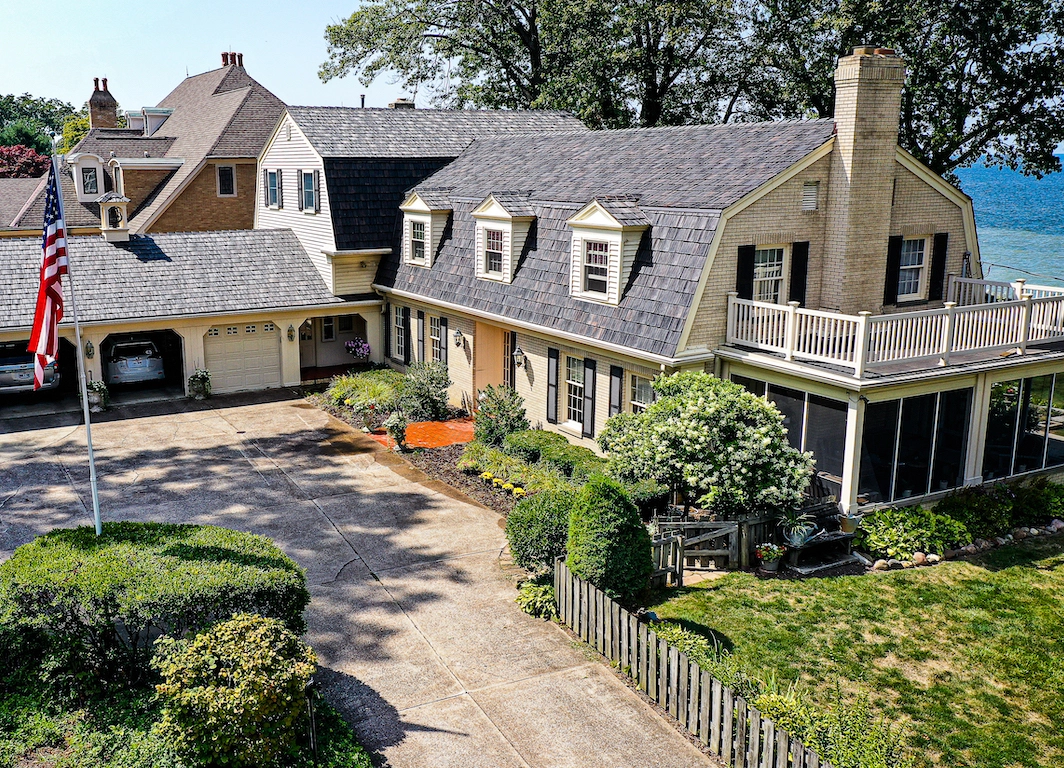Join the gambrel roof revival by including the classic barn house roof design in your future architectural plans! Everyone knows what a gambrel looks like, even if they can’t identify it by name. The two opposing double-sloped sides of a traditional gambrel evoke visions of early colonial homesteads and Midwestern barnyard scenes. Many people know the gambrel by other names, like “Dutch colonial roof” or “Dutch roof."
But what are gambrels, and why are they so popular? Let’s find out!
What Is a Gambrel Roof?

A typical gambrel style home consists of two symmetrical sides. On each side of a gambrel, the roof starts from the ridge board at a low slope. Then, the roof dives sharply, creating a much steeper incline.
The name of the roof originates from the gambrel, or hock, of a horse’s hind leg. When viewed together with the rest of a horse’s lower hind leg, a similar, double-sloped pattern appears.
Types of Gambrel Roof Shapes
Gambrels come in several shapes and sizes depending on the wants and needs of the property owner. In some cases, an architect may break with the traditional symmetry of gambrels to create an overhang, patio, or even additional indoor space. Below, you can find some of the most common types of gambrel roofs.
Classic Gambrel

The classic American gambrel roof is symmetrical and hipless, with two gables and two double-sloped sides. In general, the traditional gambrel roof will slightly hang over all four walls of the structure.
Asymmetrical Gambrel
Sometimes, architects may design asymmetrical gambrels with an extra side of roofing that juts out to create additional indoor or outdoor living spaces. In other cases, a gambrel roof may have one double-sloped side and one single-sloped side to account for limited space.
Wall-Supported Gambrel
Architects often build wall-supported gambrels where the roof does not hang over any of the walls. Instead, the roof joins each of the walls at an angle. Wall-support gambrels allow homeowners to save on materials and labor that would otherwise go towards creating eaves.
Mansard Gambrel
Unlike the two-sided gambrels, a mansard is a distinctive four-sided gambrel-styled roof. In the past, architects made no distinction between gambrel and mansard roofs, referring to both as mansards. Only later did American architects separate the hipless, two-sided gambrel from the hipped, four-sided mansard, which often has dormer windows built into the steep sides of the lower roof. Both roof types display double-sloped sides.
Benefits of a Gambrel Roof

As a highly utilitarian style of roof, a gambrel works well for a home, barn, and shed because its distinct shape provides more space at the top of structures than your standard gable roof. Read on to discover some of the benefits that gambrels offer.
1. Increased Interior Space
Gambrels enjoy considerable popularity as barn house roofs because they allow for the creation of a loft near the rafters. The slope of a gambrel is almost vertical where it connects to the wall; so, in homes, it forms an almost-full-sized room instead of a cramped attic.
2. Simplicity of Design
The beauty of a gambrel roof revolves around its simplicity. Unlike most other styles, the gambrel does not have valleys, hips, or other, elaborate joints that would require extra materials and labor. As a result, carpenters consider the gambrel one of the most straightforward roofs to build.
3. Superior Versatility
Few roof types enjoy as many different uses as a gambrel. Due to the roof’s simple, functional design, you may see it used on mansions, cottages, barns, and sheds. You might even encounter dog houses that sport the classic lines of a gambrel roof.
4. Affordability
Most homeowners love their gambrels because they prove affordable to build and maintain. Complex roofs with multiple valleys and complex joints may require specialized materials and equipment, inflating any repair costs. As such, gambrels remain a favorite of thrifty homeowners.
5. Suitability for Most Climates
Gambrels work well in most climates, including areas that receive a lot of snowfall. The nearly vertical bottom slope of the roof allows snow to slide off before it accumulates too much. The upper slope demonstrates considerable strength when under the weight of a couple of feet of snow.
6. Traditional American Aesthetics
Most potential homebuyers appreciate the aesthetic appeal of gambrels. This style of roof harkens back to before the founding of the United States of America. Its simple modesty gives every structure a little extra soul, turning every house into a home.
Brava Roof Tile: The Perfect Solution for Gambrel Roof Designs

Save the environment by choosing Brava Roof Tile for your gambrel roof project. Gambrels have more surface area than most types of roofs and therefore require far more shingles. Make the eco-friendly choice by selecting Brava Roof Tile's natural-looking cedar shake shingles or our Old World Slate roof tiles for your gambrel.
With so many tiles necessary to cover a gambrel, choosing our Brava Roof Tile products will lessen your environmental impact. Our tiles will minimize your carbon footprint because they are:
- 100% recyclable
- Made from recycled plastics
- Long lasting
- Highly insulative
Give your gambrel roof a makeover by calling our friendly team of professionals at Brava Roof Tile. Call 844-290-4196 today to discuss your roofing needs or complete the form online to request tile samples.



